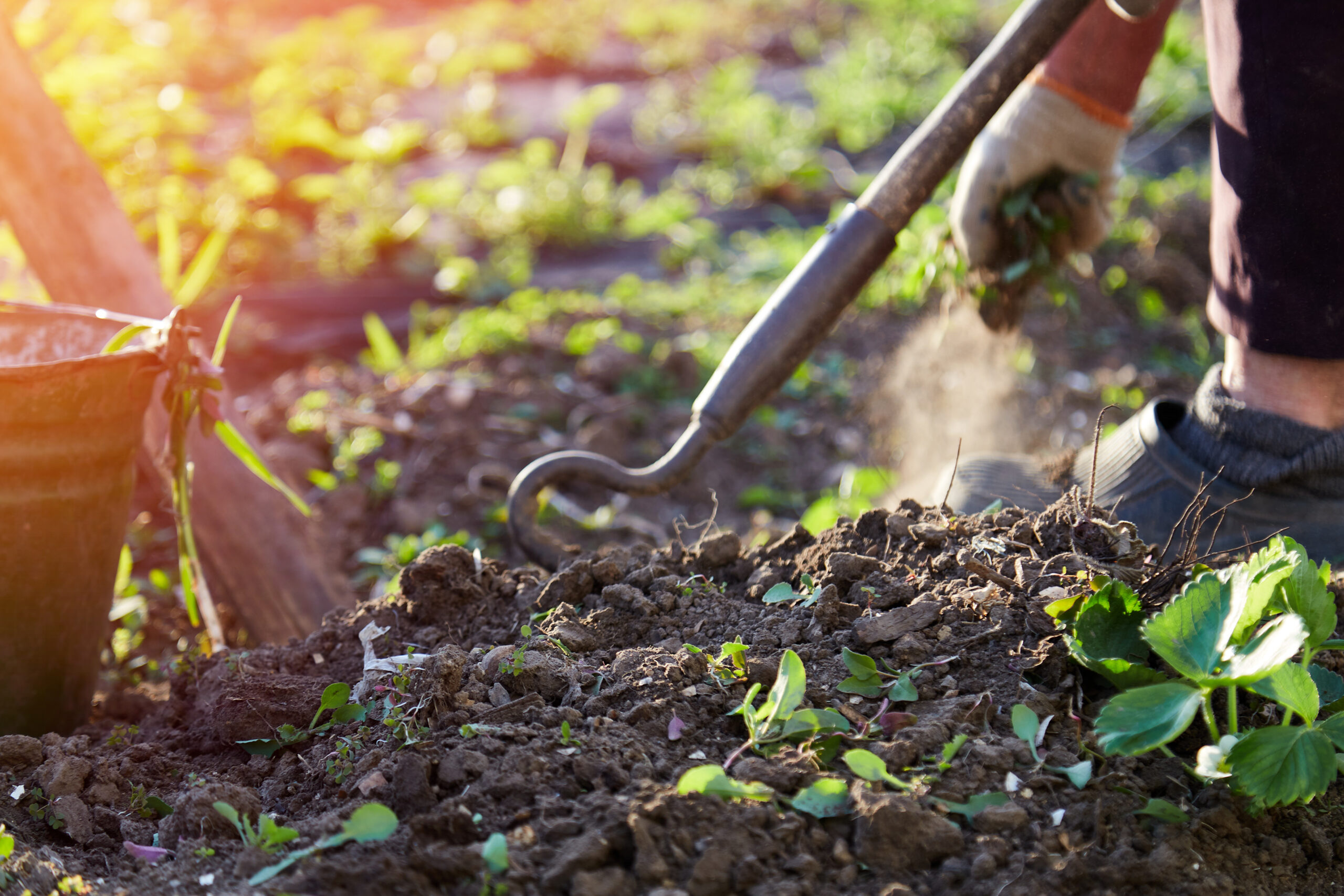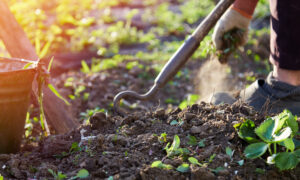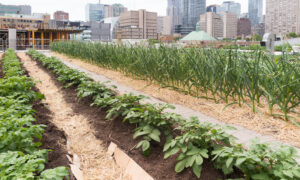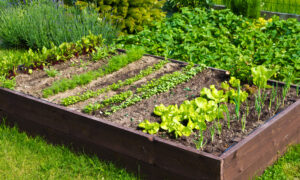Gardening is an art deeply intertwined with the rhythms of nature. Each season brings its own set of changes, challenges, and opportunities that significantly impact what and how we plant. Understanding these seasonal shifts is crucial for several reasons:
- Optimal Plant Growth: Different plants have adapted to thrive in specific seasonal conditions. Knowing what to plant and when helps ensure that your garden is productive and healthy throughout the year.
- Resource Management: Seasonal gardening allows for efficient use of resources. For instance, planting in the right season can reduce the need for additional water, fertilizers, and pest control.
- Harvest Timing: Timing your planting correctly leads to well-timed harvests, ensuring a continuous supply of fresh produce and ornamental beauty throughout the year.
- Pest and Disease Management: Many pests and diseases are season-specific. Planting at the right time can help minimize these challenges.
Climate Zones and Their Impact on Planting Schedules
The concept of climate zones is fundamental in gardening:
- What Are Climate Zones?: Climate zones are defined areas that share similar average temperatures and weather patterns. They are crucial in determining what can grow and when in different parts of the world.
- Variability of Zones: From frost-hardy zones with cold winters to tropical zones where frost is a rarity, each climate zone presents unique conditions and limitations for gardeners.
- Microclimates: Within each zone, there can be microclimates – small areas where the climate differs from the surrounding area. Understanding both your broad climate zone and local microclimates is key to successful gardening.
The Objective of This Post
This post aims to provide a detailed month-by-month guide to planting tailored to various climate zones. Whether you’re planning a vegetable garden, flower bed, or mixed-use garden, this guide will offer:
- Month-by-Month Planting Advice: Detailed suggestions on what to plant each month, considering seasonal weather patterns and plant growth cycles.
- Climate Zone-Specific Tips: Tailored advice that accounts for the variability in growing conditions across different climate zones.
- Holistic Gardening Approach: Beyond just planting, the guide will include tips on soil preparation, maintenance, and garden care through the changing seasons.
You will discover gardeners of all levels, from novices to seasoned green thumbs, will be prepared by the end of this guide with the information to navigate the yearly cycle of their gardens, making informed decisions that correspond with the natural rhythms of the seasons.
In This Article
Understanding Your Climate Zone
Explanation of Climate Zones and Their Impact on Gardening
- Definition of Climate Zones: Climate zones are geographical areas defined by long-term weather patterns, particularly temperature and precipitation. These zones are critical for gardeners because they determine the growing season’s length, the types of plants that can thrive, and the timing of their planting and harvesting.
- Importance in Gardening:
- Frost Dates: Knowing your climate zone helps you understand the average first and last frost dates, crucial for planting frost-sensitive plants.
- Plant Hardiness: Certain plants are only hardy in specific zones, making zone knowledge essential for plant selection.
- Watering Needs: Climate zones with drier conditions or seasonal droughts require different watering strategies compared to more temperate, rainy zones.
Determining Your Local Climate Zone
- Using Climate Zone Maps: The most common tool for determining your climate zone is a climate zone map, like the USDA Plant Hardiness Zone Map in the United States. These maps categorize regions based on the average annual minimum winter temperature.
- Consulting Local Resources: Local gardening societies, extension services, or nurseries can provide insights into your specific climate zone. They can also offer advice tailored to local conditions that broader zone maps might not capture.
- Observation and Record-Keeping: Pay attention to local weather patterns, especially first and last frost dates. Keeping a garden journal with these observations over the years can provide a more accurate picture of your local climate.
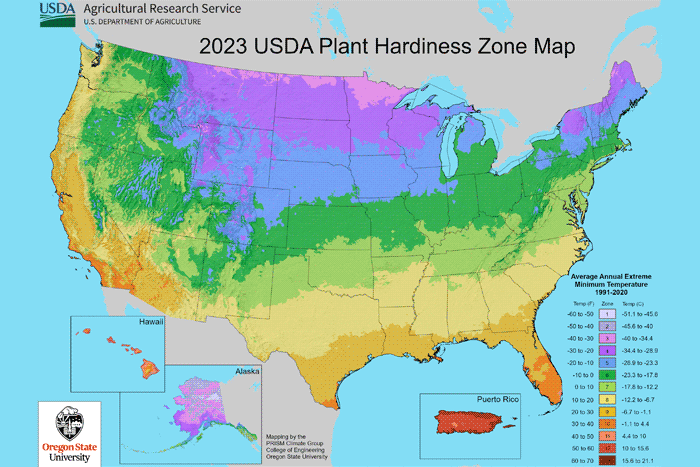
Overview of Main Types of Climate Zones Relevant to Gardening
- Tropical Zones: Characterized by warm temperatures year-round. Frost is rare or non-existent, allowing for a continuous growing season.
- Subtropical Zones: These zones experience hot summers and mild winters. Frost may occur but is infrequent.
- Temperate Zones: The zones are marked by a moderate climate with distinct seasons, including a cold winter and a warm summer. Frost dates guide the planting and harvesting calendar.
- Continental Zones: Experience more extreme temperature variations with cold winters and hot summers. Frost dates and the overall duration of the growing season are critical for garden design.
- Polar Zones: Characterized by very cold temperatures most of the year. The growing season is short, and plant selection is limited to cold-hardy varieties.
Understanding your climate zone is the first step in creating a successful garden. It informs not just what you can grow but also how and when to grow it. By tailoring your gardening practices to your specific climate zone, you can ensure a more productive, healthy, and stress-free gardening experience.
Gardening in Spring – Awakening and Planting
March: Early Spring Planting
As the first signs of spring emerge, March is a crucial month for setting the stage for the upcoming growing season. It’s a time of awakening and preparation in the garden.
Vegetables and Fruits to Plant in Early Spring
- Cool-Season Vegetables: Early spring is ideal for planting vegetables that can tolerate cooler temperatures. Some of these include:
- Leafy Greens: Spinach, lettuce, and kale are perfect for early planting as they can withstand light frosts.
- Root Vegetables: Carrots, radishes, and beets can be sown directly into the soil.
- Peas and Broad Beans: These are hardy and benefit from being planted early.
- Fruit Considerations: While most fruit trees and bushes will be planted once the ground has thoroughly warmed, early spring is the time to plan and prepare the site for them. For regions with milder climates, consider planting:
- Berry Bushes: Such as raspberries and blackberries.
- Fruit Trees: Include apples, pears, and plums if the ground is workable and not frozen.
Starting Seeds Indoors: Tips and Techniques
Get a head start on the growing season by starting seeds indoors. Here’s how to do it effectively:
- Selecting Seeds: Choose varieties suited to your climate zone. Pay attention to the seed packets for specific planting instructions.
- Timing: Generally, start seeds 6-8 weeks before the last expected frost date in your area. This timing ensures that the seedlings can be safely transplanted outdoors when the weather warms.
- Seed Starting Setup:
- Containers: Use seed trays, peat pots, or even DIY containers like egg cartons. Ensure they have drainage holes.
- Soil: Use a light, seed-starting mix that is well-draining and designed for seed germination.
- Light: Seedlings require plenty of light. For adequate lighting, place them near a sunny window or use artificial grow lights for healthy growth.
- Temperature: Most seeds need warm conditions to germinate. Room temperature is usually sufficient, but some seeds may benefit from a heat mat.
- Watering and Care:
- Moisture: The soil should remain moist but not waterlogged. Using a spray bottle can prevent overwatering.
- Thinning: Once seedlings emerge, thin them out to prevent overcrowding.
- Hardening Off: Before transplanting outdoors, gradually acclimate the seedlings to outdoor conditions. This process, known as hardening off, involves taking the plants outside for a few hours each day and gradually increasing their exposure to outdoor temperatures and sunlight.
March is a time of anticipation and preparation in the garden. By starting seeds indoors and planting early-season crops, gardeners set the foundation for a fruitful and enjoyable growing season. Remember, the specific plants and timing may vary based on your local climate zone and current weather conditions.
April: Embracing the Heart of Spring
April is a pivotal month in the gardening calendar, marking the transition from indoor seed starting to moving plants outdoors. This period requires careful handling of seedlings and attentive soil preparation.
Transitioning Plants Outdoors: Hardening Off Seedlings
- Understanding Hardening Off: Hardening off is the process of gradually acclimating indoor-grown seedlings to the outside environment. This step is crucial to prevent shock from sudden changes in temperature, sunlight, and wind.
- Steps for Hardening Off:
- Begin about 7-10 days before the intended transplant date.
- Initially, place seedlings outdoors in a shaded, sheltered area for a few hours, avoiding direct sunlight and strong winds.
- Gradually increase their outdoor time and exposure to sunlight for a week.
- Monitor the seedlings closely for stress signs and adjust their exposure accordingly.
- Ensure they are well-watered during this process, but avoid over-watering.
- Transplanting: Once hardened off, transplant seedlings into the garden. Choose a cloudy day or late afternoon to minimize transplant shock.
Soil Preparation and Early Spring Fertilization
- Assessing Soil Condition:
- Test the soil for pH, nutrient levels, and texture. Early spring is an ideal time to amend the soil based on these test results.
- Check for soil workability: Soil should be dry enough to not stick to gardening tools.
- Soil Preparation:
- Clear the planting area of any weeds or debris from the winter.
- If the soil is compacted, gently till or aerate it to improve drainage and aeration.
- Mix in organic matter such as compost or well-rotted manure to enrich the soil.
- Fertilization:
- Use an all-purpose, slow-release fertilizer to provide a steady supply of nutrients. Be cautious of over-fertilizing, which can harm plants and disrupt soil health.
- For specific plants like vegetables or flowers, use a fertilizer formulation that suits their particular nutrient needs.
- Mulching:
- Always apply a layer of mulch around new plantings to conserve moisture, suppress weeds, and regulate soil temperature.
April is a month of transition and preparation in the gardening world. By carefully hardening off seedlings and preparing the soil, gardeners lay the groundwork for a successful and bountiful growing season. The efforts put into these tasks in April will pave the way for healthy plant growth and reduced maintenance in the months to come.
May: Full-Swing Planting and Garden Maintenance
As May arrives, gardeners enter the heart of the planting season. This period is crucial for establishing a variety of late spring vegetables and fruits, as well as maintaining the overall health of the garden.
Full-Swing Planting: Late Spring Vegetables and Fruits
- Vegetable Planting:
- Warm-Season Vegetables: With the threat of frost typically past, it’s time to plant warm-season crops. These include tomatoes, peppers, cucumbers, squash, and beans.
- Succession Planting: Continue planting cool-season crops like lettuce and spinach for a continuous harvest, using succession planting techniques.
- Direct Sowing: Carrots, beans, and radishes, for example, can be seeded straight into the garden soil.
- Fruit Planting:
- Berry Bushes and Fruit Trees: If not already planted, May is often still suitable for planting berry bushes (like strawberries) and fruit trees.
- Annual Fruits: Consider planting annual fruiting plants like melons, which can be started now for a summer harvest.
Maintenance Tips for Spring-Planted Gardens
- Watering:
- Consistent Watering: Spring-planted gardens need regular watering to establish. The goal is to consistently maintain the soil’s moisture but not waterlogged.
- Watering Depth: Encourage deep root growth by watering deeply and less frequently rather than shallow and frequent watering.
- Weed Control:
- Weed your garden on a regular basis to avoid competition for nutrients and water.
- Mulching can help to control weed development and keep soil moisture in place.
- Pest and Disease Monitoring:
- Keep an eye out for common spring pests like aphids and caterpillars.
- Practice preventive measures like crop rotation and using natural predators.
- Fertilization:
- Apply a balanced fertilizer to give plants a nutrient boost, especially for heavy feeders like tomatoes.
- Consider side-dressing with compost or a slow-release fertilizer to provide ongoing nutrition.
- Staking and Support:
- Provide support for climbing plants like peas and beans.
- Stake tall plants like tomatoes to keep them upright and promote air circulation.
- Thinning Seedlings:
- Thin seedlings from direct-sown plants to ensure they have enough space to grow.
- Be gentle to avoid disturbing the roots of the remaining plants.
- Monitoring Plant Health:
- Regularly check for signs of stress, including wilting or discoloration, and address issues promptly.
- Adjust care practices based on weather conditions, especially during unexpected temperature shifts or rain patterns.
May is a dynamic and exciting time in the garden, filled with planting and nurturing young plants. This month sets the stage for summer abundance, making attentive care and regular maintenance essential for a healthy and productive garden.
Gardening in Summer – Growth and Maintenance
June: Embracing the Warmth of Summer
With June marking the beginning of summer, gardens enter a phase of vigorous growth. This month is key for planting heat-loving vegetables and fruits and for stepping up pest and disease management.
Summer Plantings: Vegetables and Fruits That Thrive in Heat
- Vegetable Planting:
- Heat-Loving Vegetables: June is ideal for planting vegetables that require warm soil and night temperatures. This list includes tomatoes, peppers, eggplants, cucumbers, squash, corn, and beans.
- Succession Planting: Continue succession planting for a continuous supply of vegetables. Crops like beans and summer squash can be planted at intervals for staggered harvests.
- Fruit Planting:
- Melons and Tropical Fruits: Plant heat-loving fruits such as watermelons, cantaloupes, and if your climate permits, tropical fruits like pineapple or guava.
- Berries: In cooler summer climates, you can still plant certain berries like raspberries or blackberries.
Managing Pests and Diseases Common in Summer
- Pest Control:
- Monitoring: Regularly inspect plants for pests such as aphids, spider mites, and Japanese beetles. Early detection is key.
- Natural Predators: Encourage beneficial insects, including ladybugs and lacewings, that prey on harmful pests.
- Organic Treatments: Use organic pesticides like neem oil or insecticidal soap as a safer control method. Always follow application instructions.
- Disease Management:
- Fungal Diseases: Warm, humid conditions can promote fungal diseases like powdery mildew and blight. Implement preventive measures such as proper spacing for air circulation and watering at the soil level to avoid wetting foliage.
- Resistant Varieties: Whenever possible, choose disease-resistant plant varieties to reduce the risk of common diseases.
- Water Management:
- Consistent Watering: As temperatures rise, consistent and deep watering becomes more crucial. Water early in the morning to reduce evaporation and allow foliage to dry out during the day.
- Mulching: Spread a layer of mulch surrounding the plants to assist in retaining the moisture in the soil while keeping the roots cool.
- Soil Care:
- Nutrient Replenishment: Summer is a good time to add a mid-season boost of fertilizer, especially for heavy feeders and fast-growing plants.
- Soil Check: Periodically check the soil for moisture and compaction. Loosen the soil gently around plants if necessary.
June is a vibrant month in the garden, filled with active growth and abundant sunshine. As the weather heats up, focusing on planting the right crops for the season, along with diligent pest and disease management, ensures that your garden remains healthy and productive throughout the summer months.
July: Nurturing the Midsummer Garden
In July, the garden is in full swing, with plants growing vigorously and some even ready for harvesting. This month is crucial for maintaining the health of the garden through attentive care and implementing strategies for prolonged productivity.
Midsummer Maintenance: Watering, Mulching, and Weed Control
- Watering Practices:
- Deep Watering: With the heat of July, deep and infrequent watering is crucial to encourage strong root growth. Focus on watering the roots versus the leaves to help prevent diseases.
- Drought Stress: Watch for signs of drought stress in plants, such as wilting or yellowing leaves, and adjust your watering schedule accordingly.
- Water Conservation: Consider methods such as drip irrigation or soaker hoses for efficient water usage and to minimize evaporation.
- Mulching:
- Retaining Moisture: A layer of mulch helps retain soil moisture and keeps the roots cooler, which is vital during the hot July days.
- Suppressing Weeds: Mulch will assist in suppressing weed growth, which can stress your plants for water and nutrients.
- Weed Control:
- Regular Weeding: Stay on top of weeding, as they tend to grow rapidly during the summer months.
- Root Removal: Ensure you remove the roots of the weeds to prevent them from regrowing.
Succession Planting Strategies
- Continuous Harvest: Succession planting ensures a continuous supply of vegetables throughout the season. As one crop is harvested, replace it with another.
- Planning for Fall Harvest: In July, start planting crops that will mature in the fall. This list includes vegetables like carrots, beets, and leafy greens.
- Staggered Planting: Plant seeds at intervals of two to three weeks for crops like beans, lettuce, and radishes for a staggered harvest.
- Heat-Tolerant Varieties: Choose heat-tolerant varieties for late summer planting, as they will have to endure the hottest part of the summer.
- Cover Crops: Consider planting cover crops in areas of the garden that have finished producing. Cover crops can enrich the soil and prepare it for the next growing season.
July in the garden is about maintenance and preparation. Maintaining a healthy and vibrant garden requires regular watering, mulching, and weed control. At the same time, implementing succession planting strategies ensures that your garden continues to produce fresh vegetables well into the fall. This dual focus on care and planning is what makes July a critical month in the gardening calendar.
August: Preparing for Autumn’s Bounty
As summer reaches its zenith in August, gardeners begin to look ahead to the fall. This month is pivotal for planting crops that will mature in the cooler days of autumn and for starting preparations for the first fall frosts, especially in colder climate zones.
Late Summer Planting for Fall Harvest
- Selecting Crops for Fall Harvest:
- Cool-Season Vegetables: August is the time to plant cool-season crops that thrive in fall’s cooler temperatures. Consider planting leafy greens like spinach, kale, and collards, as well as root vegetables like turnips, radishes, and carrots.
- Fast-Maturing Varieties: Choose varieties with shorter maturity dates to ensure they can be harvested before the cold weather sets in.
- Sowing Techniques:
- Direct Sowing: Many fall crops can be sown directly into the garden. The soil is still warm, which also encourages quick germination.
- Microclimate Utilization: Take advantage of warm microclimates in your garden for germinating seeds.
- Planning for Succession Harvests:
- Continue with succession planting strategies for crops like lettuce and beans to extend the harvest into the early fall.
Preparing for the First Fall Frosts
- Understanding Frost Dates:
- Research the average first frost date for your climate zone. This information is crucial for timing the planting of fall crops and for frost protection strategies.
- Frost Protection Measures:
- Row Covers: Have row covers or other frost protection materials like burlap or plastic sheeting ready to shield sensitive plants from early frosts.
- Mulching: Apply a new layer of mulch surrounding the plants to help protect the roots from temperature fluctuations.
- Garden Clean-Up and Transition:
- Begin to clear out summer crops that have finished producing to make room for fall plantings.
- Start composting plant debris (except diseased or pest-infested plants) to create organic matter for future gardening use.
- Preparing Perennials for Winter:
- Start cutting back perennials that have finished blooming and prepare them for the winter months.
- Consider dividing perennials and replanting to improve their vigor next spring.
August is a transitional time in the garden, blending the maintenance of summer crops with the preparation and planting for fall harvests. This month’s activities require a forward-looking approach, anticipating the cooler days ahead and preparing the garden for a seamless transition into the autumn season. By doing so, gardeners can extend their harvest and enjoy the fruits of their labor well into the later months of the year.
Gardening in Fall – Harvesting and Preparing for Winter
September: The Autumnal Shift
September marks the beginning of fall, a time when the garden transitions from the lush growth of summer to the cooler, quieter days of autumn. This month focuses on harvesting the remaining summer crops and planting for a late fall harvest while also beginning preparations for the upcoming winter.
Harvesting Late-Summer Crops
- Timely Harvesting:
- Identifying Ripeness: Monitor late-summer crops closely for signs of ripeness. Vegetables like tomatoes, peppers, and squashes should be harvested as they mature.
- Continuous Harvesting: For crops like beans and cucumbers, continue to harvest regularly to encourage further production until the first frost.
- Herbs and Perennials:
- Herb Harvesting: Harvest herbs like basil, cilantro, and parsley. Consider drying or freezing them for winter use.
- Perennial Care: Begin cutting back perennial herbs and flowers that have finished blooming to tidy up the garden.
Planting Fall Vegetables
- Fall Vegetable Planting:
- Cool-Season Crops: Plant cool-season crops such as leafy greens (spinach, lettuce), root vegetables (turnips, radishes), and brassicas (broccoli, Brussels sprouts) for a late fall harvest.
- Microclimate Utilization: Take advantage of warmer spots in your garden to extend the growing season.
- Garlic and Bulbs:
- Planting Garlic: September is an ideal time to plant garlic for harvesting next summer.
- Bulb Planting: Plant spring-flowering bulbs like daffodils and tulips for early spring blooms.
Preparing for Overwintering Plants
- Mulching for Protection:
- Apply a layer of mulch around overwintering plants to protect them from freezing temperatures and to maintain soil moisture.
- Winter Preparation for Perennials and Shrubs:
- Start preparing perennials and shrubs for winter by pruning and adding extra protection if needed.
- Preparing Garden Beds:
- Clean up garden beds, removing spent plants and debris.
- Think about incorporating compost or other organic matter into the soil to optimize it for the upcoming growing season.
September is a month of both bounty and preparation. Harvesting the last of the summer crops provides a sense of closure for the summer growing season while planting fall vegetables and preparing the garden for winter sets the stage for the next year’s growth. This balance of harvesting and preparation is key to a sustainable and productive garden, ensuring its health and vitality through the changing seasons.
October: Preparing for the Closing Season
As the garden year moves into October, the focus shifts towards final plantings for late fall and winter harvests in milder climates, along with essential garden cleanup and soil preparation for the next growing season.
Final Plantings for Winter Harvests in Mild Climates
- Selecting Appropriate Crops:
- Winter-Hardy Vegetables: For regions with mild winters, consider planting vegetables that can withstand cooler temperatures and possibly light frosts. These include kale, collards, Swiss chard, and certain varieties of lettuce and spinach.
- Overwintering Crops: Plant vegetables like garlic and onions, which will grow over winter and be harvested in early spring.
- Microgreens and Indoor Gardening:
- Consider starting microgreens indoors, which can provide fresh greens throughout the winter.
- Indoor herb gardens are also an excellent option for year-round fresh herbs.
Garden Cleanup and Soil Enrichment
- Removing Spent Plants:
- Remove dead or dying annuals and vegetables to steer clear of disease or pest spread.
- Leave some perennials intact for winter interest and to provide habitat for beneficial wildlife.
- Soil Enrichment:
- Add compost or well-rotted manure to garden beds to enrich the soil. This organic matter will decompose over winter, improving soil structure and fertility for the next season.
- In your vacant garden beds, think about growing cover crops like winter rye or clover. These crops will fix nitrogen in the soil and prevent erosion.
- Tool Maintenance:
- It is essential to clean, sharpen, and oil the garden tools before storing them for the winter.
- Drain and store garden hoses and irrigation systems to prevent freezing damage.
- Mulching for Winter Protection:
- Apply a fresh layer of mulch around perennials, shrubs, and overwintering crops for insulation against cold temperatures.
- Plant Protection:
- If applicable, put up protective structures like cold frames or cloches over sensitive plants.
October is a month of winding down and preparation in the garden. While final plantings offer the prospect of winter harvests in milder climates, cleaning up the garden and enriching the soil sets a solid foundation for the next growing season. This preparation is crucial for a healthy, productive garden, ready to awaken again in the spring.
November: Winterizing the Garden
In November, as the gardening season draws to a close in many regions, the focus shifts towards winterizing the garden. This includes protecting perennials from the upcoming cold and making early preparations for spring blooms.
Winterizing the Garden: Mulching and Protecting Perennials
- Applying Winter Mulch:
- After the first hard frost, apply a layer of winter mulch to your perennial beds. This mulch acts as an insulator, protecting plant roots from fluctuating temperatures that can occur during winter.
- Suitable materials include straw, shredded leaves, or pine needles. Avoid heavy materials that might compact and suffocate the plants.
- Protecting Sensitive Perennials:
- Wrap sensitive shrubs and young trees with burlap or tree wrap to protect them from winter wind and sunscald.
- For particularly tender perennials, consider additional protection like cold frames or covering them with a thick layer of straw or leaf mold.
- Pruning and Clean-Up:
- Prune away dead and diseased parts of plants to help eliminate the spread of diseases and pests next season.
- However, avoid extensive pruning of woody perennials and shrubs, as this can stimulate new growth that will be vulnerable to winter damage.
Planting Bulbs and Perennials for Spring Blooms
- Planting Spring-Flowering Bulbs:
- November is often the perfect time to plant spring-flowering bulbs like daffodils, tulips, and crocuses. These bulbs need a period of cold to trigger spring blooming.
- Plant bulbs at a depth of about three times their diameter and in well-draining soil to prevent rot.
- Selecting and Planting Perennials:
- This is also a good time to plant new perennials. The cooler temperatures and moist soil provide ideal conditions for root development.
- Choose perennials that are hardy in your climate zone and consider their light and soil requirements.
- Dividing and Transplanting Perennials:
- If needed, divide overgrown perennials. Replant the divisions to rejuvenate your garden and increase your plant stock.
November’s garden tasks are about protection and preparation. By properly winterizing your garden and planting for the future, you not only protect your existing garden but also set the stage for vibrant growth and blooms in the coming spring. This preparation is a key aspect of a well-maintained garden, ensuring it remains robust and ready for the next cycle of growth.
Gardening in Winter – Planning and Indoor Gardening
December to February: Embracing the Quiet Season
The winter months of December through February represent a quieter time in the garden, but they are far from idle. This period is ideal for indoor gardening activities, planning for the upcoming growing season, and attending to garden tools and infrastructure.
Indoor Gardening: Caring for Houseplants and Starting Seeds
- Houseplant Care:
- Light and Temperature: Ensure houseplants receive adequate light during shorter winter days. Rotate them regularly for even growth. Keep them away from cold drafts and excessive heat sources.
- Watering and Humidity: Water the houseplants less frequently during the winter months, waiting for the soil to slightly dry out between waterings. Increase humidity around plants, especially in heated homes.
- Starting Seeds Indoors:
- Early Preparation: Start seeds for spring planting indoors. Vegetables such as tomatoes, peppers, and eggplants, as well as some annual flowers, benefit from an early start.
- Seed Starting Setup: Use seed trays, proper lighting (grow lights if natural light is insufficient), and a consistent temperature to ensure successful germination and growth.
Planning for the Next Growing Season
- Garden Planning:
- Review and Reflect: Assess the successes and challenges of the past season. What worked well? What could be improved?
- Crop Rotation and Companion Planting: Plan your garden layout for the next season, considering crop rotation to prevent soil depletion and pest buildup and companion planting for mutual plant benefits.
- Ordering Seeds and Supplies:
- Catalog Exploration: Winter is the perfect time to browse seed catalogs and websites. Order seeds early for the best selection.
- New Varieties and Experimentation: Consider trying new plant varieties or different gardening methods in the upcoming season.
Winter Pruning and Garden Tool Maintenance
- Pruning:
- Trees and Shrubs: Many trees and shrubs benefit from pruning in the winter since their structure is more obvious and the plants are dormant.
- Pruning Techniques: Focus on removing dead, diseased, or damaged wood and shaping the plants for the next growing season.
- Tool Maintenance:
- Cleaning and Sharpening: Clean, sharpen, and oil garden tools to prolong their life and ensure they are ready for spring.
- Equipment Check: Inspect and repair garden equipment like hoses, sprinklers, and mowers.
Winter gardening activities might be less visible but are no less important. This season of planning and preparation sets the stage for a successful and fulfilling gardening year ahead. By staying engaged with indoor gardening, planning for the next season, and maintaining tools and equipment, gardeners can enjoy the quieter winter months while laying the groundwork for future growth and productivity.
Year-Round Gardening Activities
Gardening is not just a seasonal activity; it encompasses year-round tasks and responsibilities. Certain aspects of gardening continue irrespective of the season, playing a crucial role in the health and productivity of your garden.
Ongoing Tasks: Composting, Water Management, and Garden Journaling
- Composting:
- Continuous Process: Composting is a year-round activity. Regularly add kitchen scraps, garden waste, and other organic materials to your compost bin.
- Turning and Maintenance: Regularly turn your compost to facilitate decomposition and create a rich, nutritious compost for your garden.
- Winter Composting: Even in winter, you can continue to compost. While the process slows down, adding layers of insulation like straw can help maintain compost activity.
- Water Management:
- Consistent Monitoring: Monitor and adjust your watering practices in response to your garden’s needs and weather conditions. Over-watering can be as detrimental as under-watering.
- Seasonal Adjustments: Reduce watering in the dormant season and increase it during the growing season, especially in dry spells.
- Irrigation System Care: Maintain and repair your irrigation systems throughout the year to ensure they are efficient and ready for use when needed.
- Garden Journaling:
- Record-Keeping: Keep a garden journal throughout the year. Record planting dates, varieties planted, weather patterns, successes, challenges, and other observations.
- Reflect and Learn: Use your journal to reflect on what worked and what didn’t and plan future gardening activities accordingly.
Adjusting Your Gardening Activities to Your Specific Climate Zone and Local Weather Patterns
- Climate Zone Awareness:
- Tailor your gardening activities to suit the specific requirements of your climate zone. This includes choosing appropriate plants and adjusting planting and harvesting times.
- Be aware of microclimates within your garden and utilize them to your advantage.
- Weather Pattern Adaptation:
- Stay informed about local weather forecasts; be prepared to protect your garden from unexpected weather events like frosts, heatwaves, or heavy rains.
- Implement strategies like using row covers for frost, shading for extreme heat, or improved drainage for heavy rain conditions.
- Seasonal Flexibility:
- Be flexible and adaptable with your gardening practices. Weather patterns will vary from year to year, and what works one season might not work the next.
- Experiment with various techniques and plant varieties to find what works best in your garden’s unique conditions.
Year-round gardening activities are an integral part of a gardener’s routine. By engaging in continuous composting, effective water management, and diligent garden journaling, along with adapting to the specific needs of your climate zone and local weather patterns, you can ensure a resilient and thriving garden throughout the year. These ongoing tasks not only keep you connected to your garden but also lay the foundation for its long-term health and productivity.
The Ever-Changing Garden Canvas
The Importance of Seasonal Awareness in Gardening
As we conclude our journey through a year in the garden, it’s evident that each season brings its unique rhythm and set of requirements. Understanding and embracing these seasonal changes is key to a successful and rewarding gardening experience.
- The Dynamic Nature of Gardening: Gardening is not static; it’s a dynamic interaction with the changing seasons. This cycle of growth, harvest, and renewal mirrors the rhythms of nature itself.
- Learning and Adapting: Each season offers lessons and opportunities. Whether it’s the vigorous growth of summer or the quiet dormancy of winter, there’s always something to learn and ways to adapt your gardening practices.
- The Rewards of Seasonal Gardening: Embracing the seasonal nature of gardening brings a deeper appreciation for the natural world and a more profound connection to the food we grow and the beauty we cultivate.
Encouraging Gardeners to Embrace Each Season
Gardening is a journey of continual learning and adaptation. We encourage gardeners to:
- Stay Curious and Flexible: Be open to experimenting and trying new things in your garden. Each year and each season can be different, so flexibility is key.
- Celebrate Successes and Learn from Challenges: Take pride in your successes and view challenges as learning opportunities. Both are valuable parts of the gardening experience.
- Connect with Nature’s Cycles: By aligning your gardening activities with the seasons, you’re not just growing plants; you’re participating in the natural cycle of life.
Join Our Gardening Community
Subscribe for More Gardening Insights
- Stay Informed and Inspired: Subscribe to our newsletter for regular gardening tips, seasonal guides, and updates. Whether you’re a novice or an experienced gardener, our insights can help you grow and thrive in your gardening journey.
Share Your Gardening Stories
- Join the Conversation: We love hearing from our readers! Share your gardening stories, experiences, and photos. Your insights could inspire and help fellow gardeners.
- Community and Connection: By sharing, you become part of a community of gardeners who support and learn from each other.


